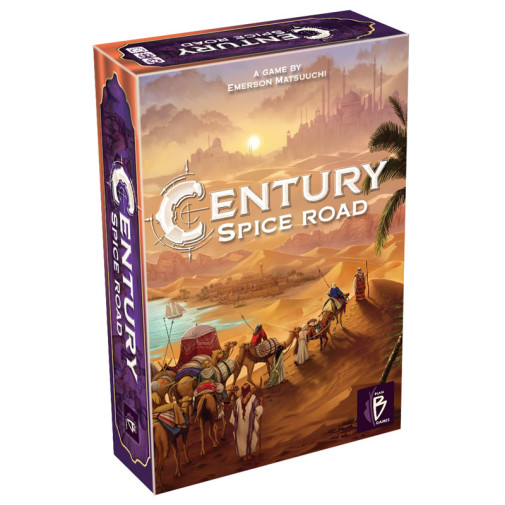We use cookies to make your experience better. To comply with the new e-Privacy directive, we need to ask for your consent to set the cookies. Learn more.
Century Spice Road Game
- Small parts. Not for children under 3 years.
As the sun slowly rises, spreading dusty heat across the vast desert expanse, the caravan stands ready to journey with its newly acquired spices. It will be another long day as the camels begin to walk slowly along the spice road, which stretches along the eastern Mediterranean Sea. It is in this world that the Century Spice Road game takes place as you too seek fortune and fun with this game of intrigue and trade. Set up and play are relatively simple to learn with a few basic steps:
Contents and Setup:
- Point Cards – Players collect these cards with varying game points depending on the difficulty level to acquire the spices needed for them. Display five of these cards in a row face up to begin the game.
- Gold and Silver Coins – Gold coins are worth three points and are placed above the leftmost point card. Place silver coins, which are worth one point above the second to the left point card. When players claim cards beneath the coins, they also collect one coin per card claimed.
- Merchant Cards – Each player begins with two merchant cards. Players trade Merchant cards for spices. Some cards upgrade spices to their next most expensive level or trade between types of spices. Place a row of six Merchant Cards face up below the Point Card row.
- Spices – There are four different spices represented by cubes of different colors. Yellow is Turmeric and is the least expensive. Saffron is red, Cardamom is green and the most valuable spice is Cinnamon represented by brown cubes. Spices sit next to the board in their own bowls in order of their worth.
On each turn, players choose from one of the following actions:
- Play a Merchant card to upgrade or trade spice cubes.
- Acquire an additional Merchant card.
- Rest – Take back all of your played Merchant cards
- Claim one of the Point Cards. Once you have the required number of spices in the combination depicted on one of the displayed cards, trade them in and claim the cards and any coins rewarded.
The game ends when a player has taken their sixth card (2-3 player game) or fifth card (4-player game). The current round then finishes, and everyone totals their points from Point Cards and coins. The player with the most points wins! I highly recommend this fun, strategic game for its theme, replay value as well as ease of learning. For 2-4 players with 30-45 minutes of fun. ~Marsha
Century: Spice Road is the first in a series of games that explores the history of each century with spice-trading as the theme for the first instalment. In Century: Spice Road, players are caravan leaders who travel the famed silk road to deliver spices to the far reaches of the continent for fame and glory.
Discover the beauties of the spice trading road and its colourful markets with the amazing artwork by international renowned artist Fernanda Suárez.
Wrap your mind around simple and pure game mechanics combined with a touch of deck-building system that lead to endless strategies and decisions.
| Product Format: | Other |
|---|---|
| Brand: | Plan B Games |
| Grades: | 3-AD |
| EAN/UPC: | 826956400004 |
| Length in Inches: | 10.75 |
| Width in Inches: | 7.5 |
| Height in Inches: | 2.75 |
| Weight in Pounds: | 1.75 |

